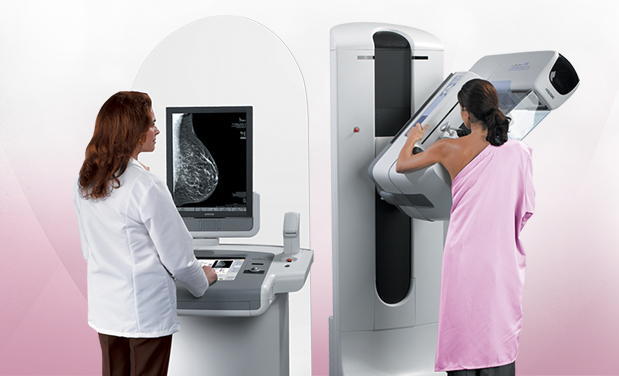Breast galactorrhea is the secretion of colostrum or milk from the breast during lactation. Typically, this pathology is associated with endocrine disorders. Often, galactorrhea is accompanied by menstrual irregularities. This is not a separate disease. The allocation of milk, not associated with breastfeeding, is one of the manifestations of various pathologies. What are the causes of this symptom and how to treat it? We will consider these issues further.
Breast Physiology
What is breast galactorrhea? To answer this question, you need to understand the physiology of the endocrine system of a woman. The mammary glands are very sensitive to hormones. The secretion of the pituitary gland, prolactin, is responsible for the production of milk. During lactation, its level increases significantly. This is a natural and normal state of the body. Prolactin and provides the production of milk during breastfeeding.
However, there are times when milk production is not related to having a baby and lactation. In this case, such a symptom is considered a manifestation of the pathology. Most often this is caused by an increase in prolactin levels. This condition is called endocrinologists hyperprolactinemia. In addition, the following hormones can affect milk production:
- growth hormone;
- estrogens;
- progesterone;
- insulin;
- thyroxine;
- cortisol.
Thus, breast galactorrhea in women can be caused by pathologies of various endocrine organs.
In this case, not only milk, but also colostrum can be released from the breast . This is a fluid that is normally produced in the first days after birth. She looks like a thick yellowish substance.
Causes of pathology
There are many causes of breast galactorrhea. These include diseases of the pituitary, thyroid, adrenal glands and ovaries. Isolation of milk may be a sign of the following pathologies:
- tumors of the pituitary region;
- inflammation of the brain (if the pathology extends to the pituitary gland);
- hypothalamic disorders;
- severe forms of inflammation of the mammary gland;
- polycystic ovary;
- adrenal tumors;
- Addison's disease;
- inflammatory pathologies of the female genital glands;
- cystic changes in the mammary glands;
- hypothyroidism;
- hyperthyroidism.
The pathological excretion of colostrum can also be associated with chronic insufficiency of kidney and liver function, spinal cord tumors, exacerbation of chronic shingles, as well as with skin allergies in the region of the mammary glands.
Some medications can also cause galactorrhea. Antipsychotics, hormonal contraceptives, and corticosteroids can affect prolactin levels. Also, the allocation of milk may be the result of the use of herbal preparations based on nettle, dill, fennel, anise, thistle. These herbs stimulate lactation.
Can provoke galactorrhea and wearing too tight underwear. Constant compression of the mammary glands can cause abnormal colostrum. Wearing underwear made of coarse fabrics that irritate the skin of the chest is also harmful.
What is breast galactorrhea in idiopathic form? In this case, specialists can not establish the reason for the allocation of milk. It is believed that this condition is not associated with pathology and is caused by emotional or physical stress.
Symptomatology
The main manifestation of galactorrhea of the mammary gland is discharge from the breast. The severity of this symptom may be different. In mild cases, a few drops of fluid from the mammary glands are released. With strong galactorrhea, abundant discharge departs, reminiscent of the outflow of milk during breastfeeding.
Galactorrhea can be bilateral or unilateral. If discharge from only one breast is noted, then this is usually associated with a disease of the spinal cord.
At the same time, milk has no impurities of pus or blood. The liquid has a white or yellowish color. The flow of milk or colostrum can be permanent. With an excess of prolactin, a periodic course of breast galactorrhea is more often observed. From the photo below, you can understand what is the root cause of this pathology - the pituitary adenoma (prolactinoma).

Outflow of milk is not the only sign of pathology. There are other symptoms of breast galactorrhea:
- menstrual irregularities (up to the cessation of menstruation);
- headache;
- blackheads on the skin;
- visual impairment;
- hirsutism (male hair growth).

Such manifestations are noted in diseases of the endocrine glands, especially the pituitary gland.
Often, the pathological outflow of milk is accompanied by chest pain. Such symptoms are characteristic of cystic changes in the mammary glands. Due to the constant discharge, pathological changes in the skin of the nipples are noted.
Degrees of disease
Several degrees of breast galactorrhea are distinguished:
- 1st degree. Isolation of milk is noted only with strong pressure on the chest. A few drops of liquid come out.
- 2nd degree. When pressed on the nipples, the milk comes out in the form of a stream.
- 3rd degree. The outflow of milk occurs independently, without pressure. Fluid is released continuously.
Launched forms of galactorrhea cause a lot of inconvenience to a woman. Constant discharge stains underwear and is often accompanied by discomfort in the chest.
Complications
Complications of galactorrhea of the mammary gland are associated with the main pathology. Serious diseases of the pituitary and hypothalamus often become the cause of discharge from the chest. They can lead to increased intracranial pressure and severe headaches. Malignant pituitary tumors can metastasize to other organs.

Diseases of the adrenal glands and thyroid gland in a neglected form can lead to the development of a coma. It is characterized by a sharp drop in the level of hormones in the blood and often ends in death.
In addition, with galactorrhea, infertility is often noted. The hormone prolactin suppresses ovulation. As a result, a woman does not become pregnant. In this case, the patient requires a thorough examination and long-term therapy with hormonal drugs.
If pregnancy nevertheless occurs against the background of galactorrhea, then the future mother and fetus are at increased risk of cystic skidding (chorioncarcinoma). This oncological disease ends with the death of the embryo. The tumor is dangerous for a woman, she can give metastases to the lungs.
Diagnostics
A mammologist is involved in the treatment of galactorrhea. Consultation with an endocrinologist, gynecologist, neurologist or oncologist may also be required.
If the patient has signs of galactorrhea of the mammary gland, then a comprehensive diagnostic examination is performed. After all, there can be many reasons for this condition. It is necessary to check the function of several endocrine glands at once. For this purpose, the following studies are prescribed:
- Blood test for hormones. It is necessary to identify the level of prolactin, pituitary hormones, adrenal glands, thyroid gland and ovaries.
- X-ray of the skull. This study helps to detect changes in the shape of the Turkish saddle - the fossa in which the pituitary gland is located.
- MRI and CT of the brain. They allow you to examine in detail the pituitary-hypothalamic region and identify tumors.
- Mammography. Using this study, changes in the structure of the mammary glands can be determined.
- Ultrasound of the mammary glands and internal genital organs. Allows to detect cystic changes and tumors.
- X-rays of light. Tumors in the respiratory organs often give metastases to the pituitary gland. In order to diagnose them, they make an X-ray of the lungs.

An anamnesis is also required, during which the regularity of the menstrual cycle is clarified. It is necessary to carefully examine the patient and identify the presence of excessive hair growth on the face and body.
Drug treatment
Galactorrhea is not a separate disease. This is only a symptom of various pathologies. Therefore, it is necessary to conduct therapy of the underlying ailment.
Treatment of galactorrhea of the mammary gland of the pituitary origin is carried out using drugs that suppress the formation of prolactin. The following medicines are used:
- Parlodel
- Dostinex
- "Bromocriptine";
- Cabergoline.
These medicines do not contain hormones, but their active ingredients interact with dopamine receptors. This reduces prolactin levels.
In idiopathic galactorrhea, dynamic observation is recommended. The patient should periodically visit a mammologist. There are times when the flow of milk stops on its own.
With persistent galactorrhea of unknown origin, the drug "Mastodinon" is prescribed. This homeopathic remedy contains only herbal ingredients. It has few contraindications and is well tolerated. Patient reviews about the drug are mostly positive. After a course of treatment with this medicine, many patients returned to normal prolactin levels and milk production stopped.

If galactorrhea is associated with thyroid diseases, then iodine preparations are prescribed:
- "Triiodothyronine";
- "Iodine asset";
- "Iodomarin."
Thyroid hormones are also used;
- "Thyroidin";
- "Tireotom";
- Levothyroxine.
If galactorrhea is caused by diseases of the ovaries, then estrogen preparations are prescribed:
- "Janine";
- Non-Ovlon;
- Rigevidon;
- Triziston;
- Mercilon;
- Triquilar.

These combination preparations contain synthetic estrogen and progesterone. They help normalize the hormonal background of the body and allow you to establish the regularity of the menstrual cycle. With excessive hair growth and acne, the drug "Diane-35" is prescribed, it reduces the level of male hormones and cleanses the skin.
As additional methods of treatment, physiotherapy is used. Prescribe endonasal electrophoresis with vitamins and the effect of galvanic currents on the collar zone. These methods of therapy have earned a lot of good reviews with breast galactorrhea. What it is? In electrophoresis, the drug is delivered to the nasal passages through the electrodes. Galvanization of the collar zone improves blood circulation in organs and metabolism. However, such methods can only be used in conjunction with drug therapy. It is impossible to cure galactorrhea with physiotherapy alone.
Surgical intervention
In some cases, surgical treatment of galactorrhea of the breast is used. The following indications for surgery are:
- Tumors of the pituitary gland and hypothalamus. At the beginning of therapy, the doctor uses conservative methods of treatment. But if the adenoma does not decrease, then it must be removed. Currently, operations on the pituitary gland are often carried out through the nasal passage. Such surgery is more gentle than craniotomy.
- Tumors on the mammary gland. First, the doctor prescribes chemotherapeutic drugs that contribute to the resorption of the tumor. If the neoplasm does not decrease, then it is excised.
- Galactorrhea, not amenable to medical treatment. In this case, it is necessary to carry out an operation to remove the milk ducts.
However, surgery is a last resort. Most often, galactorrhea can be eliminated by conservative methods.
Folk remedies
Treatment of breast galactorrhea with folk remedies must be agreed with the doctor. You should not count on the fact that prolactin levels can be normalized by herbal preparations alone. Hormonal disorders usually require long-term drug therapy.
However, folk remedies for breast galactorrhea can complement the main treatment. There are herbs that lower prolactin levels. With pathological milk excretion, the following recipes may be useful:
- Composition of lemon balm, motherwort, valerian and hypericum. These herbs need to be taken in the same amount. The raw materials must be crushed and mixed. Then 1 tablespoon of the mixture is placed in a thermos and pour a glass of boiling water. The composition is insisted for 1 hour and passed through cheesecloth. This remedy should be taken 3/4 cup three times a day before meals.
- Decoction of hops, passionflower, elderberry and hawthorn leaves. Herbs are taken in equal proportions, chopped and mixed. Then 2 tablespoons of the drug collection pour a glass of boiling water. The composition must be steamed for 20 minutes, and then insist for half an hour and strain. The drug is taken three times a day for 1/4 cup.
- Sage. Chopped grass is taken in half a teaspoon in the morning before eating.
- Bee pollen. This tool should be taken three times a day, one teaspoon.

It is important to remember that folk remedies can help with minor hormonal disruptions. If the patient is diagnosed with a tumor, then one should not get carried away with home recipes. Neoplasms require serious therapy, and sometimes surgical intervention.
Prevention
How to prevent breast galactorrhea? First of all, it is necessary to cure endocrine diseases on time. If the patient has menstrual irregularities, headaches and excessive hair growth, then such symptoms cannot be ignored. You need to contact a gynecologist-endocrinologist and undergo an examination.
To prevent idiopathic galactorrhea, you must adhere to the following recommendations:
- Wear comfortable soft fabric underwear.
- If possible, avoid physical and nervous strain.
- Have a regular checkup with a mammologist and gynecologist.
- Take caution with medicines and herbal remedies.
Women suffering from galactorrhea should follow a diet. You should try to eat as many legumes as possible, leafy and green vegetables, nuts, and various types of cheese. These foods lower prolactin levels. At the same time, you should avoid eating oats, wheat dishes, dairy products, excessive amounts of fish and meat. These types of food contribute to the production of milk and are harmful in galactorrhea.